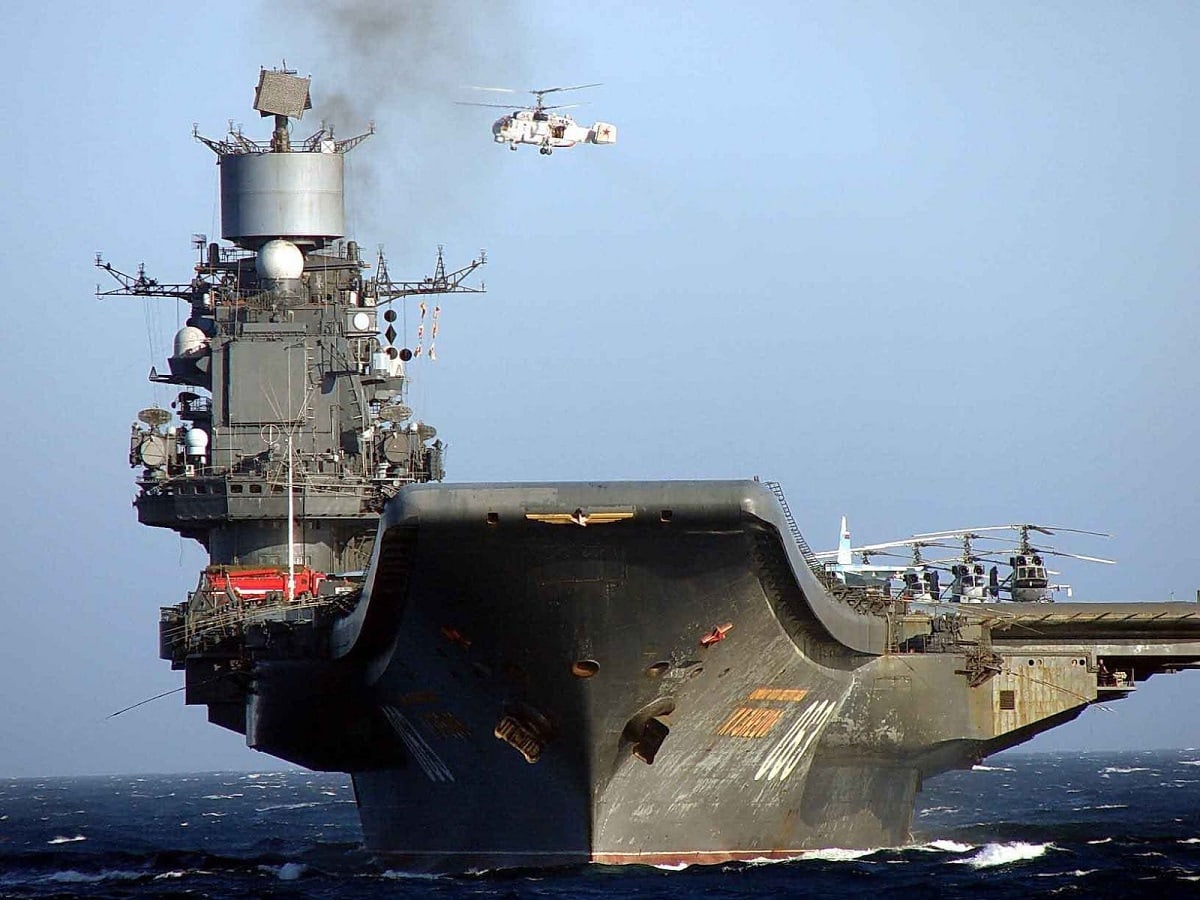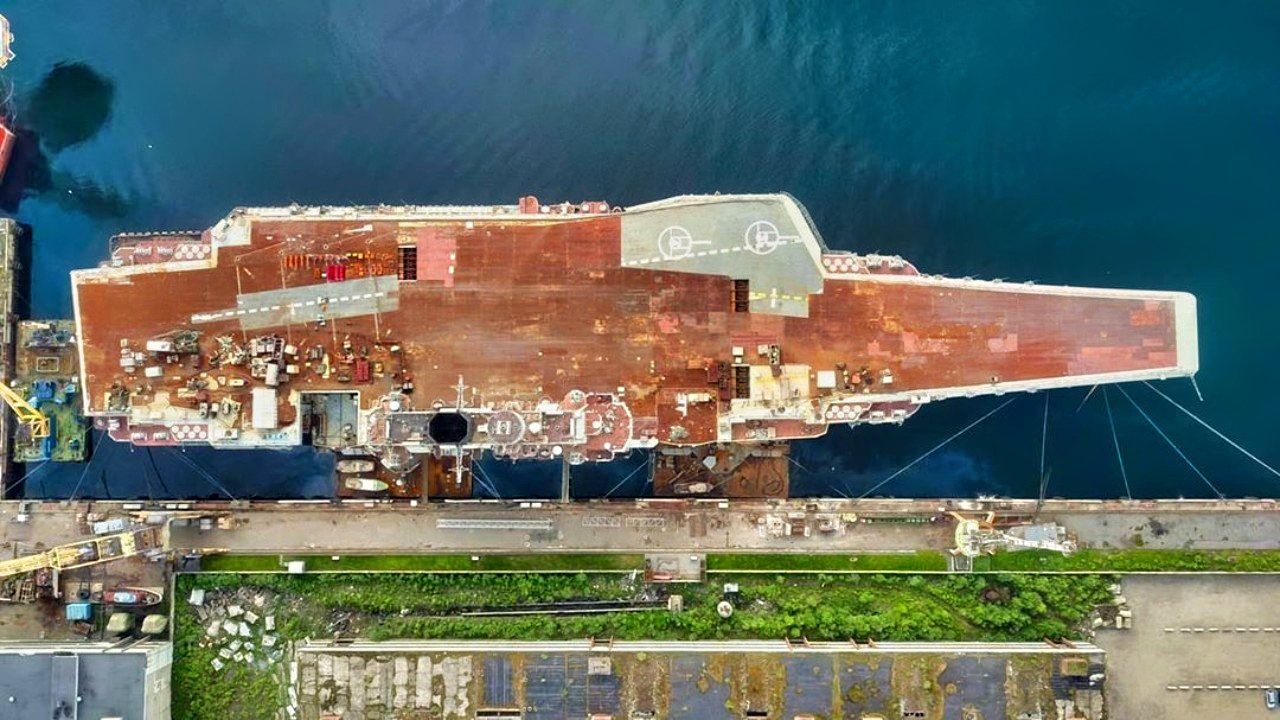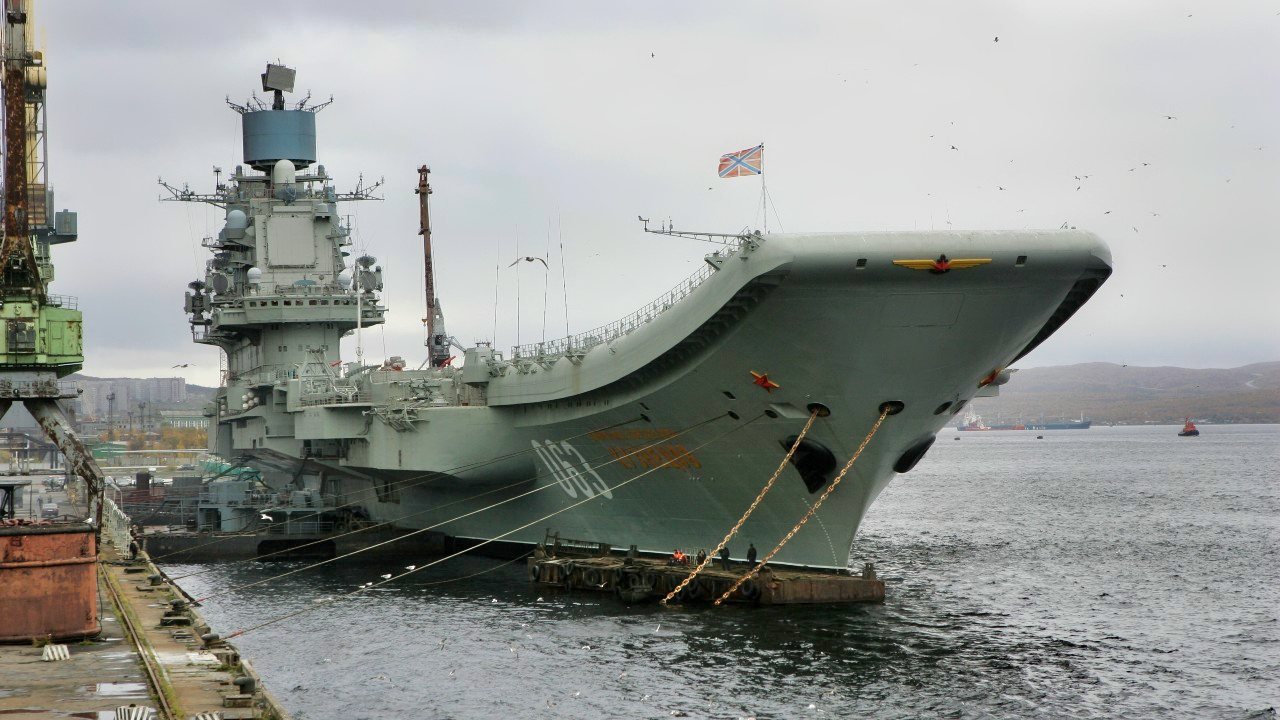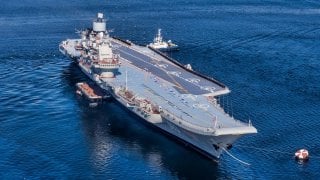Russia Is Freaked: Why the Russian Navy's Last Aircraft Carrier Is a Nightmare
The Russian Navy’s sole aircraft carrier, Admiral Kuznetsov, inherited from the Soviet Red Navy, exemplifies Moscow’s carrier challenges.
Summary and Key Points: The Russian Navy’s sole aircraft carrier, Admiral Kuznetsov, inherited from the Soviet Red Navy, exemplifies Moscow’s carrier challenges.

-Despite its outdated technology and frequent mechanical issues, the Kuznetsov remains in service for training purposes and its significant cruise missile capabilities.
-The carrier’s role allows Russia to maintain a rudimentary carrier capability. Moscow plans to construct a modern, indigenous carrier to compete with U.S. carriers, underscoring its commitment to developing carrier-based naval operations despite historical setbacks.
Why Russia Clings to Its Aging Aircraft Carrier, Admiral Kuznetsov
The Russian Navy inherited much of its warships, equipment, and doctrine from the Soviet Red Navy that preceded it. The old Soviet navy was, at its peak, a real competitor for the United States Navy—particularly in the Mediterranean Sea, where the Americans and Soviets played a ceaseless game of cat-and-mouse with each other there (this game was repeated throughout the world’s oceans over the course of the Cold War, but it was particularly visceral in the relatively tight quarters of the Med).
The Americans made their aircraft carriers and the detachment of fixed-wing aircraft that traveled aboard those leviathans of war the centerpiece of their offensive naval warfare doctrine. The Soviets, on the other hand, did not prioritize aircraft carriers. Instead, Moscow’s naval strategists viewed flattops as defensive systems to protect their far more important surface cruisers and submarines. Indeed, during the Cold War, the Red Navy never had traditional aircraft carriers as the Americans possessed. They possessed helicopter carriers.
And that history and strategic choices are at the core of why Russia has some very interesting aircraft carrier problems and choices it will need to make in the near future.
A Change of Strategic Heart on Aircraft Carriers
In the early 1980s, the Nikolaev Shipyard in Ukraine was contracted by the Soviet government to construct an aircraft carrier that could copy the fixed-wing launch capabilities of the American carriers. Inevitably, the Admiral Kuznetsov was a launched in 1985. But the carrier was never quite what its designers had hoped for. And the USSR was collapsing precisely at the moment that the Kuznetsov was finding its sea legs.
Clearly, the Soviet’s lone aircraft carrier was a prototype designed to train their forces on an aircraft carrier. The training this limited and rudimentary carrier provided to the Soviet Navy would have undoubtedly been folded into what Moscow had hoped would be a growing Soviet aircraft carrier capability that became increasingly complex and powerful with each iteration of development.

Yet, that was not to be.
The collapse of the Soviet Union effectively ended Moscow’s early dabbling into aircraft carrier operations. The interesting thing about the Admiral Kuznetsov is that, like its Soviet forebearers, it’s not classified by the Russian military today as an actual aircraft carrier. Rather, both the Russian military as well as NATO have coded the Admiral Kuznetsov as an “aircraft carrying heavy cruiser.” Not only does the Kuznetsov have a limited number of fixed-wing aircraft, but it also possesses helicopters.
More importantly, though, is the fact that the warship is armed with powerful long-range surface-to-surface cruise missiles. American aircraft carriers do not possess such a capability.
What's the Point of Russia's Aircraft Carrier?
Still, the single Russian aircraft carrier has never truly posed a challenge to the United States Navy. What’s more, the Russian carrier has been plagued with technical problems since its first sea trials. Having been built when the Soviet Union was collapsing, corners were cut and the ship was built on the cheap—meaning that it lacks the accoutrements or effectiveness that most US carriers possess. It has been deployed around six times in the last 33 years.
And, for the last six years, it has sat in the shipyards undergoing serious repairs. Moscow expects to deploy the aging, dilapidated warship later this year.
Given its near continual state of disrepair, and the fact that the Russian Navy has never oriented itself toward building a traditional aircraft carrier and organizing its maritime forces around the offensive capabilities that such a traditional aircraft carrier would allow, the question on many experts’ minds is: why are the Russians maintaining this hunk of junk?
The answer cuts back to capabilities.
You've Gotta Crawl Before You Can Walk
As with China’s first aircraft carrier, the Liaoning, the relatively unsophisticated nature of the ancient Kuznetsov carrier allows for the Russian Navy to train on how to conduct proper carrier-based operations in the real world. While the Kuznetsov is known for being a bucket of rusting bolts, the carrier has conducted wartime operations. During their war against ISIS in Syria, the Kuznetsov air wing launched 400 missions. Of those 400 missions, 100 of them were executed from the Kuznetsov.
And don't forget the Kuznetsov's massive cruise missile capability. This makes it still a valuable member of the Russian fleet. Especially after the Russian Baltic Sea flagship, the Moskva, was sunk by Ukrainian forces (with the help of US intelligence) during the ongoing Russo-Ukraine War. Russia badly wants to maintain its maritime cruise missile launch capability.

Recently, Moscow announced that they intended to begin construction on a new, indigenously built aircraft carrier that would be more modern and compete better with the American aircraft carriers. Whether the Russians can achieve this objective is another matter entirely, given the cost, complexity, and time commitment involved in building such behemoths.
Nevertheless, the Russians have identified maintaining at least a rudimentary carrier capability as being in their national interest. They have endeavored to maintain this capability, no matter how imperfect. Moscow will likely be able to scale their experiences with the failing Kuznetsov up, and even possibly build better carriers in the future.
That is why Russia won’t just kill their only aircraft carrier.
Author Experience and Expertise: Brandon J. Weichert
Brandon J. Weichert, a National Interest national security analyst, is a former Congressional staffer and geopolitical analyst who is a contributor at The Washington Times, the Asia Times, and The-Pipeline. He is the author of Winning Space: How America Remains a Superpower, Biohacked: China’s Race to Control Life, and The Shadow War: Iran’s Quest for Supremacy. His next book, A Disaster of Our Own Making: How the West Lost Ukraine, is due October 22 from Encounter Books. Weichert can be followed via Twitter @WeTheBrandon.
All images are Creative Commons or Shutterstock.
From the Vault
Russia Freaked Out: Why the U.S. Navy 'Unretired' the Iowa-Class Battleships
Battleship vs. Battlecruiser: Iowa-Class vs. Russia's Kirov-Class (Who Wins?)


